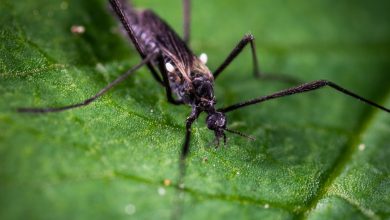Grow Your Own: How to Propagate Snake Plants

One of the easiest to manage indoor plants, snake plants, also happens to be one of the best to propagate, so you can grow new ones whenever you want!
The technical term for snake plants is dracaena trifasciata. These plants are also sometimes referred to as mother-in-law’s tongue. As a member of the evergreen perennial plant family, the snake plant is well-known for green banded leaves that grow vertically from the plant’s base. Indoor gardeners love this stylish looking plant for its unique ability to thrive under practically any condition, including long time spans in between watering.
When you’re looking to establish more snake plant growth, propagation is definitely the way to go. Below, we’ll get into propagation, how it can benefit snake plant enthusiasts, and give you four simple propagation methods you can do yourself.

What Is Propagation?
Plant propagation essentially translates to establishing new growth intentionally through roots, seeds, or with cuttings. There are several ways to propagate new plant growth, as well as various benefits that can benefit both the plant and the gardener. Below are some common benefits that lead gardeners to propagate:
- Faster Growth – When you’re looking to shave off substantial time from growing new plants, propagating is definitely the way to go. It can take years before plants produce seeds that can be used in developing new plants. But by propagating through plant cuttings or other methods, you can often have a new plant growing within a year. Because of this growth-boost, various crop producers choose to propagate.
- Cost Saving – When you’re looking to grow more of the same plant, propagating can be very cost-effective, as opposed to purchasing new plants or seeds.
- Consistency – Propagation allows for plants to be duplicated more closely. Because you’ll be stimulating growth directly from another plant, it can help you to ensure consistency between each new plant. When purchasing new plants or growing by seeds, there’s always a more significant chance for variety within the same species. Consistency can be especially crucial for those who are growing food crops.
- Sterile Plant Cloning – There are some plants that are sterile and unable to produce new growth, or similarly, some plants may have trouble reproducing. By propagating, you can bypass the issue of plant reproducing.
- Enhanced Growth – Some plants actually benefit from the process of being propagated for growth. You may find that plants you remove clippings or root portions from begin to grow better than ever.

Four Propagation Methods to Use
While there are various ways to propagate, it’s essential to use only the methods that work best for each plant variety. Fortunately, with snake plants, there are four separate methods of propagation that are very effective. Below, we’ll delve into each one and give you step-by-step instructions so you can propagate your snake plants on your own.
Soil Propagation
Soil propagation is one of the most popular methods for use with a wide variety of plants, including the snake plant. Start by gathering three to four pots large enough to grow a new plant, a knife, and potting mixture. Then, follow these simple steps below:
- Begin by selecting a mature and healthy leaf for propagating. You’ll want to cut as close to the soil line as possible with your knife.
- Cut your leaf horizontally into two to three-inch tall pieces. Be sure to indicate which part of the leaf is up and which is down; you’ll want to be sure to place the proper end in the soil.
- Allow your leaf cuttings to callous over the course of two to three days. By doing this, you can prevent infection and rot from overtaking your leaf through bacteria present in the soil.
- Place each leaf cutting directly into the soil in your prepared pots, about two inches down.
- Water your plant generously enough to dampen the soil about two inches deep.
- Continue watering and caring for your plant pieces as needed, and you should begin seeing growth in about one month.

Water Propagation
The water propagation method is often selected by gardeners because it’s relatively easy to get started. Simply gather a glass jar or vase and a pair of scissors, and then follow the directions below.
- Begin by selecting a mature and healthy leaf for propagating. You’ll want to cut as close to the soil line as possible with your knife.
- Cut a v-shaped portion out of the bottom of your leaf that’s about one inch deep.
- Fill your jar or vase about half of the way full with water, and then place your cut inside with the cut portion facing downward.
- Place your jar in an area that is well-lit and warm.
- Be sure to tend to your plant clippings and change out the water any time it appears murky or dirty.
- In about two months, you should begin seeing root development. Once this occurs, take your cutting and place it into a pot with moist soil. Be sure to plant about two inches deep.
Rhizome Propagation
Propagation by rhizome is a bit more involved than the soil or water methods, but many gardeners believe it to be more productive. To start, you’ll need newspaper, a pot, potting mixture, and a sharp knife. Below, we’ve listed simple directions to help you propagate your snake plant rhizomes for the most effective growth.
- Begin by sliding your snake plant out of its pot and locating a horizontally growing rhizome. Rhizomes appear to resemble garlic cloves. Slice off the rhizome directly at the base of your snake plant.
- Leave your rhizome to sit out for a few days so it can callous.
- Plant the rhizome in the pot about two inches down and water generously enough to moisten the soil as far as the rhizome is planted.
- Tend and care for the rhizome, and over the next one to two months, you should see new sprouting begin to appear.
Division Propagation
Division propagation is one of the quicker methods of reproduction. Essentially, you’ll be dividing your currently full-grown snake plant into several smaller plants and then re-potting them. Before beginning, gather newspaper to catch dirt, several new pots, potting mixture, and a sharp knife. Follow the directions below to complete your propagation by division.
- Turn your snake plant onto its side, and then gently slide it out of its pot.
- Locate the rhizomes of your plant. To propagate into healthy portions, you’ll want to have at least three rhizomes available per plant and a healthy root system; divide accordingly using your sharp knife.
- Place each divided plant into its own pot. Water generously, and then allow your soil to dry before watering again.
- Continue caring for each plant as you would any regular snake plant.
Pro Tips
While the directions below will definitely have you on your way to propagating your snake plants for new growth in no time, there are certain things you can do to optimize the process for the best results. Below, we’ve procured some pro tips that you won’t want to miss:
- Just as with the human body, hormones are a critical component to a plant’s growth. To support healthy growth for your newly propagated plants, consider dipping the bottoms of each cutting or rhizome into a root hormone liquid or powder before planting.
- Your propagated snake plants will grow best in bright, but indirect lighting. Try to place them in a well-lit room, but not right by any windows.
- Always use clean pots to place your snake plant clippings into. Although you deal a lot with dirt in gardening, cleanliness is critical to reducing bacteria and fungal growth.
- Use potting soil that isn’t too dense. This way, your plants will be able to gather as much water as they can through proper soil dispersal.
- Be sure not to over-water your snake plants. Because snake plants are considered drought-tolerant, it’s difficult to water them too little. However, if you over-water them, it can cause them to grow fungus or bacteria. Make sure just to keep the top two inches of soil moist.
- Keep your snake plants in a warm area. Anything below 50°F will most likely lead to plant death.
- Be patient during the process of waiting for your new plants to bud. It may take a while for you to see growth visibly, but most likely, there’s a lot of growth occurring already.
- You don’t need to worry about fertilization too much when it comes to snake plants. Like their water needs, snake plants also don’t require much in the way of food and nutrients.
- Keep the leaves of your snake plant clean and dry. If they accumulate dust, simply wipe off gently with a damp cloth.

Other Plants You May Consider Propagating
Now that you’ve successfully propagated snake plants, you might be wondering what else you can grow. Here is a list of several other plants that handle propagation excellently:
- African violets
- Umbrella plants
- Rosemary
- Philodendron plant
- Pothos
- Prayer plants
- Tradescantia
- ZZ plants
- Boston ferns
- Peace lilies
- Spider plants
- Aloe vera plants
- Ponytail palms
- Bromeliad
- Monstera



